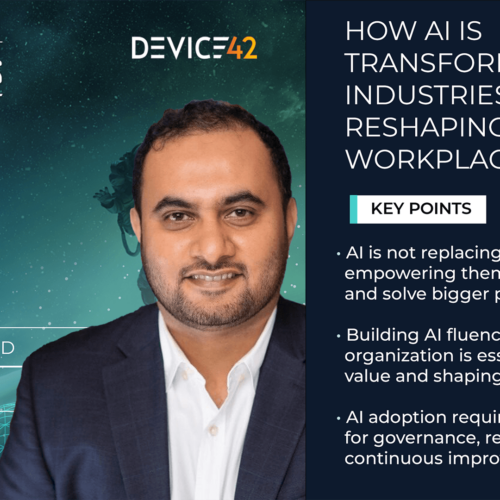Cloud discovery and dependency mapping is the process of discovering and mapping hybrid cloud applications and infrastructure. This capability is gaining importance as enterprises accelerate their hybrid- and multi-cloud strategies. By identifying all critical software assets and technical resources that live on-premises and in public and private clouds, enterprises can make better decisions about where to process workloads and how to modernize applications. In addition, cloud discovery and dependency mapping helps IT and IT service management teams optimize the management of applications and infrastructure: improving performance and providing a better user and customer experience. Just to make things even more complicated, this capability has multiple short forms, including DDM, ADM, and ADDM. For the purpose of this blog, we’ll use the most common acronym, ADM, which is short for application discovery and dependency mapping.
Read our blogs:
10 Reasons You Should Invest in Application Dependency Mapping
Adapting to Hybrid IT: A Toolkit for Future-Proofing Infrastructure
Application Discovery and Mapping: Exploring Different Approaches
Why Choose Cloud Discovery and Dependency Mapping
There are multiple ways to map applications today. Teams can track applications and their dependencies manually, using tools like spreadsheets. However, the fast growth of core-to-edge networks typically makes this process unfeasible. Instead, many teams are opting for ADM-specific tools or next-generation IT asset management (ITAM) and configuration management database (CMDB) solutions.
It’s important to review tool capabilities carefully. For example, some CMDBs don’t provide automated discovery at all and require manual maintenance. Others provide discovery, but not dependency mapping. Still others are only agent-based and don’t offer agentless discovery and mapping. In addition, CMDBs may be stand-alone solutions or part of an integrated product set. And not every CMDB will integrate with a company’s preferred IT service management (ITSM) solution like ServiceNow, as some vendors want to provide their own ITSM capabilities.
Companies that want the most flexibility and scalability will often choose a CMDB solution that integrates with other tools, such as ITAM and data center infrastructure management (DCIM); offers both agentless and agent-based discovery and mapping; and can integrate with other vendor solutions.
Here are some typical use cases for cloud discovery and dependency mapping:
Plan cloud migrations: Applications can have dozens or hundreds of dependencies. Being able to discover and map these dependencies enables IT teams to plan cloud migrations, determine the best path for each application, and de-risk these migrations. Google finds that two in five cloud leaders (41.4%) plan to increase their use of cloud-based services and products in 2023 due to economic uncertainty, with 33.4% saying they’ll migrate from legacy enterprise software to cloud-based tools and 32.8% planning to migrate on-premises workloads to the cloud.
The IT team at a large multinational vacation rental company wanted to accelerate the firm’s path to the cloud, but faced a complex IT infrastructure and operations that had developed over the years.
The vacation rental company’s migration partner used a CDMB with application dependency mapping capabilities to gain insight into all of the firm’s devices and linkages, spanned eight data centers, 8,000 virtual machines, 1,600 applications, and six petabytes of storage. The partner used the discovery and service mapping data to plan which applications could be rehosted, replatformed, rearchitected, or repurchased on AWS.
Modernize applications: Enterprises have scores of legacy applications they’re planning to modernize. According to an EvolveWare survey, their goals include boosting the productivity of employees (40%), retiring mainframe infrastructures (37%), reducing dependencies on legacy code (35%), eliminating security vulnerabilities (31%), and decreasing maintenance complexity and costs (30%), among others. Being able to map applications and their dependencies enables teams to choose the best path for each application, such as replacing the legacy application with a commercially available product (34%), refactoring and migrating the application (34%), or rewriting the application from scratch (32%).
50%: Of all global legacy applications will be modernized within the next two years. Source: Infosys
Integrate multiple IT infrastructures: When companies merge or acquire other firms, they inherit other parties’ IT infrastructures, including all of their technical debt. IT departments need to rapidly integrate the two environments, which means retiring end-of-life applications, decommissioning redundant platforms, and integrating business processes and applications. This process would be unwieldy and likely impossible with manual processes. By using a tool that provides cloud discovery and dependency mapping capabilities, teams can get a quick snapshot of both companies’ IT environments and use this information to plan integration efforts.
A multinational manufacturing conglomerate had rolled up a number of small companies, but hadn’t fully integrated their IT departments. As a result, IT operations were complex and decentralized, and the company lacked documentation on applications that it needed for planning. The IT team didn’t understand how many technical resources they had, and the company operated seven different enterprise resource planning systems across its entities.
A consulting partner used a CMDB with ADM capabilities, gaining access to the corporate network remotely via a VPN. After collecting and analyzing the data, the consultancy created a consolidation and migration plan for the conglomerate. By migrating key workloads to the public cloud, the conglomerate was able to retire technical debt, decreasing servers by approximately 60% and locations from 72 to just seven across the US and European Union.
Plan for growth: Many companies can experience surges in growth that strain operational processes. Overburdened applications may experience latency, negatively impacting the customer experience. However, companies in demanding industries, such as cloud infrastructure and services, are held to demanding service-level agreements.
Cloud ADM solutions enable high-volume businesses to evaluate their applications, dependencies, and performance. Being able to visualize hardware and software dependencies enables these companies to make changes to minimize client service interruptions and speed time to incident resolution.
That was Maxihost’s situation. A fast-growing cloud and dedicated services solution in Brazil, Maxihost deployed an integrated ITAM, CMDB, and DCIM solution to discover and track applications and dependencies, bringing new levels of visibility and awareness to IT operations.
Enhance IT compliance: When teams map applications and dependencies, they see business process flows and where data lives. This information can help them maintain compliance with regulations governing, such as the General Data Protection Regulation (GDPR) which requires that personal data on European citizens be stored and used only in the European Economic Area and a few other countries. Similarly, teams can improve compliance with industry regulations governing personally identifiable information (PII) and personal health information (PHI).
Enhance cybersecurity: Cloud ADM solutions enable teams to evolve defense-in-depth strategies by identifying and mitigating security gaps, enforcing strict controls, and micro-segmenting services to prevent lateral movement in the event of an attack.
AppDirect is a cloud service commerce company that experienced significant growth, making it difficult for the IT team to create a single version of truth for its IT assets. The team had been using Excel spreadsheets to track assets, which was time-consuming and prone to error.
By deploying an integrated ITAM and CMDB that provides both agentless and agent-based discovery scans, AppDirect was able to identify all of its devices, including those in sensitive locations. Developing an up-to-date inventory of its assets and dependencies enables AppDirect to maintain compliance with a demanding CIS Security Controls standard as well as proactively identify and address issues. That helps AppDirect ensure a high level of security for its business.
Reduce application downtime: ITSM teams can use cloud ADM solutions to monitor applications, infrastructure, and dependencies. For example, they can see which resources, such as containers, Kubernetes clusters, and virtual machines, support key applications. Those teams that use a CMDB can also assess changes and configurations.
This information proves invaluable when incidents occur. Instead of doing detective work on application linkages or updates, ITSM teams can access this information instantly, using it to prioritize work, determine impacted stakeholders and services, and more quickly identify root causes of issues. That’s why almost all (91%) of ITSM teams agree that a CMDB is a critical component of ITSM operations management.
2 in 3: Of all ITSM teams use CMDBs to improve their processes, such as incident diagnostics and root cause analysis.
Optimize resource usage: IT organizations struggle with wasted spending, a challenge that has gotten worse recently with cloud computing, due to its decentralized nature. With business teams and developers commissioning their own resources, it’s difficult for IT to get a holistic picture of applications and infrastructure unless they use application dependency monitoring.
IT teams that use cloud discovery and dependency mapping can identify under-utilized technical resources. They can either decommission them; re-allocate them to support other applications and infrastructure; or virtualize them to support multiple applications, reducing waste.
18%: Average composite server utilization of US enterprises, despite a 48% virtualization rate. Source: 451 Research/AWS.
Do a deep dive with these blogs:
How to Improve Your IT Incident Management Processes
Guide to Reducing IT Mean Time to Resolution (MTTR)
Implementing Cloud Discovery and Dependency Mapping
To get started with cloud discovery and dependency mapping, teams will want to select a vendor that provides desired capabilities and deployment models. They can typically trial the solution for free, before making a financial commitment.
For Device42, this process involves authorizing users to download our appliance and remote collector to the hypervisor of their choice and then auto-discovering assets and mapping dependencies. In just a few minutes, teams gain holistic insights into both external and internal network performance with live visualizations that are constantly being updated.
Companies that choose to work with us are billed annually on a per-device basis. Cloud discovery is provided as part of the core solution; customers can choose to add application dependency mapping as an optional module.
Improve Cloud Discovery and Dependency Mapping and Future-Proof Your Business
As these use cases and case studies show, being able to discover applications and map dependencies across cloud infrastructures is critical to operating a successful business and maintaining stable infrastructure. IT teams can use cloud discovery and dependency mapping insights to improve current performance and resource utilization, while preparing their company for effective growth.
In addition, teams will want to determine whether they want a fit-for-purpose ADM tool or a more robust solution.
Many IT teams are seeking to consolidate solutions and find tools that work harder. Device42’s solution offers integrated CMDB, ITAM, and DCIM capabilities, providing deeper insights and automated processes that bring clarity and consistency to data center management.




